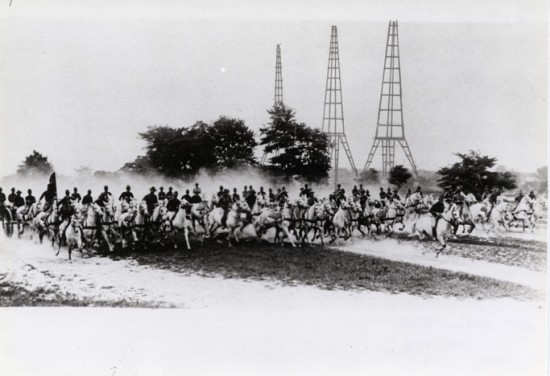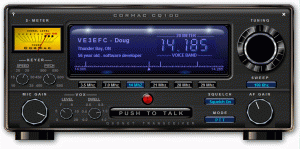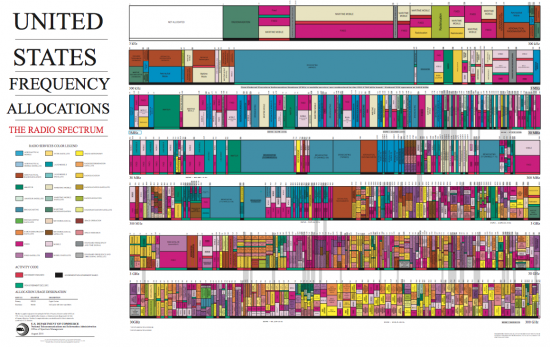Author Archive: admin
100th Anniversary of Three Sisters Radio Towers
At a period in the history of Arlington, Virginia, long ago, there was an area called Radio, Virginia. It was a neighborhood named for the old U.S. Navy Wireless Station in the vicinity of Columbia Pike and Courthouse Road.
A trio of radio antennas – known to locals as “The Three Sisters’’ – towered over the neighborhood. In their day, the antenna towers were the world’s tallest. One of the towers was 45 feet taller than the Washington Monument. The Navy opened Radio Arlington, call sign NAA, in 1913, launching the U.S. military’s global communications system. A streetcar stop was even named “Radio.’’
Old Radio Arlington marked the first time the term “radio’’ was used in communications, according to Nan and Ross Netherton’s book “Arlington County in Virginia: A Pictorial History,” which was published in 1987. In the days of Marconi and other radio pioneers, the new communications mode was called “wireless telegraphy.’’
Eiffel Tower
Radio Arlington’s other firsts included a transoceanic radiotelephone circuit with a wireless station at the Eiffel Tower in 1915, and regular broadcasts of time signals, a service that helped ships at sea calibrate their navigational equipment.
While they may seem quaint or even primitive by modern standards, upon their completion in 1913, the Navy’s Radio Station Arlington Towers were considered to represent the height of cutting edge communications technology. In their day, “The Three Sisters” as they were known, were the second largest manmade structure in the world behind only the Eiffel Tower, with the tallest of the three standing a full 45 feet higher than the Washington Monument.
The towers were moved in 1941 because they were in the flight path for the newly opened Washington National Airport. The towers stand today at Annapolis Naval Acadamy in Maryland, on the edge of the Chesapeake Bay. The first time ‘radio’ was used to describe ‘wireless’ communications was when these towers were built and tested.
QSONet delivers virtual ionosphere for amateur radio
QSONet is a good, timely resource for hams:
The Cormac Propadex – Current Ionospheric Conditions:
- Propadex is updated four times per hour
- Eight hours of history is shown on the graph.
- When the Propadex is high, it means the F2 maximum useable frequency is higher than average for this time of day.
- The Cormac Propadex is based entirely on the latest government reports for f0F2. This is the maximum useable frequency for the F2 ionosphere layer. Some government stations are updating this value 4 to 6 times per hour.
- The Propadex value is the DIFFERENCE between the latest reported f0F2 value and the 60 day average FOR THIS SAME TIME OF DAY.
- For example, if the Propadex shows as +110 at time 1700 Z, it means means the government monitoring station is reporting a maximum usable frequency 1.10 MHz higher than the 60 day average for this exact same time of day.
- Currently, we are obtaining data from the U.S. Air Force Radio Solar Telescope Network (RSTN) site at Wallops Island, Virginia. This site appears to be updating data several times per hour.
U.S. Frequency Allocations Wall Chart
Any ham knows that the radio spectrum is crowded. How crowded? Well, nothing drives home the point better than this PDF wall chart from the Department of Commerce. Click here to access the PDF.
Leisurely and impressive DXing on HF
The year 2012 comes to a close and it’s been a busy one. I’ve not been able to participate in regular RACES nets due to work commitments, but 2012 has been a successful time for “leisurely DX’ing.” I’ve finally lived in the same spot long enough to earn WAS and DXCC (Phone/Mixed) certificates using a modest HF station. And it only took about 30 years as a ham to get it done! 🙂
There are a few recent QSO’s that ARPSC members / readers may still be able to “snag”:
- Republic of South Sudan (Z81),
- Rodriguez I. (3B9),
- St. Peter and Paul I. (PT0S),
- Lesotho (7P),
- South Cook (E5/S), and
- Mauritania (5T).
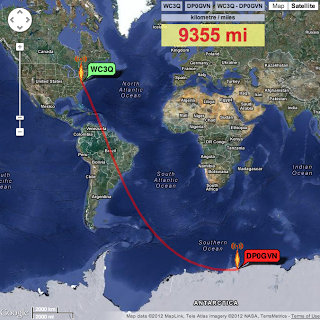 Other new entities worked (band specific) include: St. Helena I., Angola, Namibia, Saudi Arabia, Qatar, Gibraltar, Faroe Is, and Fernando de Noronha (PY0F).
Other new entities worked (band specific) include: St. Helena I., Angola, Namibia, Saudi Arabia, Qatar, Gibraltar, Faroe Is, and Fernando de Noronha (PY0F).
Perhaps the longest distance QSO’s were with stations on the continent of Antarctica … a mere 9000+ miles. DP0GVN / Neumayer III Station and KC4AAC / Palmer Station are often posted on the DX Cluster.
My station for DX’ing is fairly modest: FT-950, an HF amplified and an inverted HEX beam hanging from a 45′ high oak branch in our back yard. I’ve also started successfully working 40 and 75 meter DX using a long wire and a “Cage” antenna (75 meters).
You can read more about my DX adventures, my station, and antennas – along with posts on EmComm and my “DX Support Team” – by visiting http://wc3q.blogspot.com.
If you’re interested in DX or want to learn more, please drop an email. “DX Hot Spots” can also be tracked, as I work ’em, via real-time ClubLog Twitter posts for new entities as they’re worked (@wc3q).
Silent Key: Sean Smith, KG4WSS, Killed in Consulate Attack

Sean Smith, KG4WSS — shown here in his Facebook photo — was killed on September 11 in an attack on the US Consulate in Benghazi, Libya.
Sean P. Smith, KG4WSS, of Falls Church, Virginia, was killed when the US Consulate in Benghazi, Libya, was attacked on September 11. He was 34. Smith was one of four Americans, including Chris Stevens — the US Ambassador to Libya — who was killed in the attack.
Smith, a native of San Diego, enlisted in the Air Force in 1995 at age 17. He served six years as a ground radio maintenance specialist, including a deployment to Oman, before leaving the service in 2002 as a staff sergeant. He was awarded the Air Force Commendation Medal.
Smith, who had worked at the State Department for 10 years, was in Libya on a temporary assignment when he was killed. Prior to his temporary assignment to Benghazi, Smith served for the State Department in Brussels, Baghdad, Pretoria, Montreal and The Hague.
(story credit: ARRL.org)
Amateur radio support for the 37th Marine Corps Marathon
By Gerry Greenwood, N3EVT
The 37th annual Marine Corps Marathon will be held on Sunday, October 28, 2012. Amateur radio has traditionally supported the foot race with radio operators positioned all along the 26 mile course and at key medical facilities staffed by Navy medical.
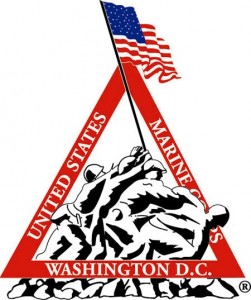 In addition those certified Arlington RACES personnel have supported Arlington Fire/EMS by being the link between these first responders and the radio operators on the course. If you wish to be a part of this major Washington event you need to apply through an on-line website (http://www.ncacdc.com/).
In addition those certified Arlington RACES personnel have supported Arlington Fire/EMS by being the link between these first responders and the radio operators on the course. If you wish to be a part of this major Washington event you need to apply through an on-line website (http://www.ncacdc.com/).
After you have signed up you will be verified and considered a “volunteer” for purposes of assignment. You are encouraged to participate in this worthwhile activity which benefits our community and provides us with a live exercise opportunity in message traffic handling. You can apply generally and receive an assignment commensurate with your background, training and equipment.
For those of you who are RACES certified you may indicate in the COMMENT box on the on-line form that you wish to be part of Arlington RACES/Arlington Fire/EMS. The hams who are heading up the MCM planning group have been working since at least June to pull together all the various aspects of the communications plan.
The net control station (NCS) will again be located on the grounds of the Armed Forces Retirement Home in Washington, DC. It’s a beautiful park-like elevated location in Washington and actually looks down on the U. S. Capitol dome. And its line of sight location to just about everywhere on the race course means NCS can get a signal out to the hams on the course, even SIMPLEX if necessary.
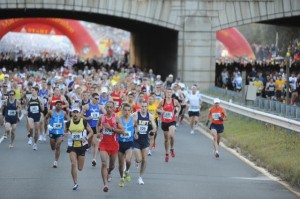 But the fly in the oinment is that some operators, ignoring advice, report for duty with an HT and the rubber duck antenna that came with the radio. Frequently this just isn’t enough to insure reliable communications with NCS if you are trying to access a repeater in Rockville or Tysons Corner. So a word to the wise, generally – if you are going to be involved in emergency communications you need a plan that includes a gain antenna and a transmitter that has more than 5 watts. I think this is going to be stressed this year for the MCM.
But the fly in the oinment is that some operators, ignoring advice, report for duty with an HT and the rubber duck antenna that came with the radio. Frequently this just isn’t enough to insure reliable communications with NCS if you are trying to access a repeater in Rockville or Tysons Corner. So a word to the wise, generally – if you are going to be involved in emergency communications you need a plan that includes a gain antenna and a transmitter that has more than 5 watts. I think this is going to be stressed this year for the MCM.
In the latest planning meeting there was an interesting discussion on when the event ended. Did it end when the last runner crossed the finish line?
Or since the MCM now officially includes a post-race street festival with medical facilities does emergency communications support end when the Navy closes the last of those facilities. Stay tuned. The race course has been slightly altered from last year in that the runners proceed around a different side of the Pentagon. This entails shifting some mile markers 100’ or more. So if you were on the course last year and can visualize where a particular mile marker was, you will have to update your mental image.
This year’s All Hands meeting will be October 20th in Rockville, MD where the most current information will be shared, handouts distributed and questions answered. Hope to see you for the race.
>>> Amateur Radio Operators … volunteer to help coordinate the Marathon. Click here. <<<


